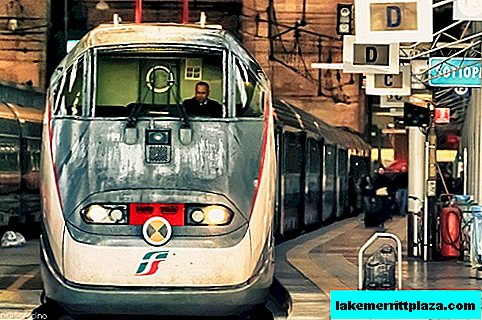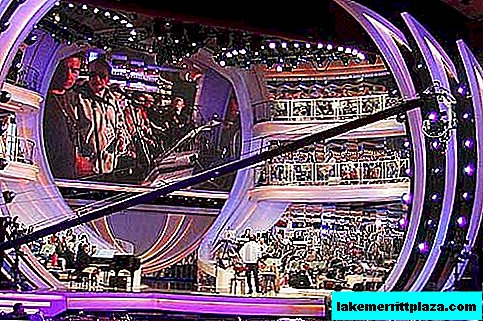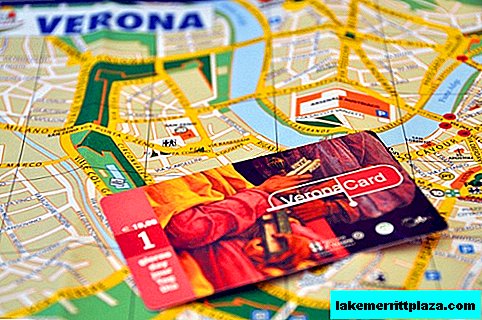The National Automobile Museum (Museo Nazionale dell'Automobile) in Turin (Torino) is named after Giovanni Agnelli, Italian entrepreneur and former chief shareholder of Fiat Fiat and the Juventus team. Included in the ranking of the 50 best museums in the world.
During a visit to the museum, you can get acquainted with historical materials, archival photographs, technical specifications of cars, with the names of famous bodybuilders and get other interesting information using your own smartphone, multimedia kiosks or iPad tablets provided by the museum.
Opening hours
- Monday: from 10 a.m. to 2 p.m.
- Tuesday to Sunday: 10 a.m. to 7 p.m.
- Last admission 1 hour before closing
Official site: www.museoauto.it
Address: Corso Unità d'Italia 40, 10126 Torino
Ticket price
- Adult ticket: 12 euros
Reduced ticket: 10 euros for visitors over 65 and from 6 to 26 years. - Free: children under 6 years old; Journalists with international identification; season ticket holders of the Museums of Turin Piedmont and Turin + Piedmont Card.
Photo report and my review
I did not expect that the automobile museum in Turin would impress me, and my wife especially liked it. We walked around the exhibition for about 2 hours, more and more immersed in the history of the automotive industry.
The museum was founded in 1932, and in 2014 it was completely reconstructed - today it is an ultra-modern architectural structure.

The exposition begins with an interesting installation - a carriage, without a coachman and horses, but with a motor attached to the back - this is how automotive industry began more than 100 years ago! Yana hung here for a few minutes.

You want to take photographs in the museum literally every exhibit. I will introduce you only the models that seemed to me the most beautiful and unusual.
One of the first Fiat models in 1902 and 1903.

1905 Fiat with a roof. This is how the workshops of design engineers at the beginning of the 20th century looked like.
This is how the workshops of design engineers at the beginning of the 20th century looked like.
The Pecori three-wheeled wagon for one passenger in 1891 and the stylish 1908 Legnano. Unfortunately, because of the crisis, the car had no chance, but you must admit - handsome!


Fast forward to the next era. The American model Cord L-29 of 1931, weighed 1800 kg and could accelerate to 170 km / h and the first Fiat 500 (Cinquecento) of 1936.

1948 Italian Lancia Aprilia, a great example of aerodynamic design. A car with an engine capacity of 1.5 liters, could accelerate to 125 km / h. And also the super-stylish Mercedes Benz 540X of 1936, it was on such, as I imagine, Italian gangsters who traveled to the USA.

In parallel with us, the museum was visited by a group of Italian schoolchildren from 8 to 13 years old and near this 1954 Fiat Turbina they squealed. All the same, good design is timeless.

In the 1950s, Fiat mastered the mass production of 500 and 600 models.

A separate room is dedicated to American cars, how beautiful their shapes were!

Excerpts from the 1969 Jaguar E-TYPE excerpts from Hollywood films where he was seen in love scenes are shown. I am sure that today in such a car, many girls would "feel dizzy" next to the driver.

GAZ M-20, it is the VICTORY of 1957 - the legendary domestic car.

One of the first solar-powered cars in the world, already in 1987, active development of alternative energy sources began.

The Great Hall is dedicated to wheel evolution and engine building. Mirrors are installed under the stands with motors to make it convenient to consider the design from different angles.

A separate space is devoted to rare sports cars and concept models. I liked the Zagato Iso Rivolta Vision Gran Turismo, which was created in 2017 specifically for a computer game and has never traveled on public roads.
 The evolution of Ferrari racing cars, from the very first models to the modern race cars in the Formula 1 championship just last season.
The evolution of Ferrari racing cars, from the very first models to the modern race cars in the Formula 1 championship just last season.
- I advise you to see the photo report about: Ferrari Museum in Modena
Old Lancia racing cars with headlights and the Runabout concept designed by Marcello Gandini from the Bertone atelier were shown at the Turin Motor Show in 1969.

And a few more prototypes from 1970.
 In the last hall of the museum, the exposition is dedicated to contemporary art - various art objects and installations were created from car parts.
In the last hall of the museum, the exposition is dedicated to contemporary art - various art objects and installations were created from car parts.
I really liked the museum, it exceeded my expectations. If you are going to Turin, I recommend including it in the obligatory cultural rest program.
Near the museum there is a unique hotel located in the shops of the former FIAT factory, watch a video review:







